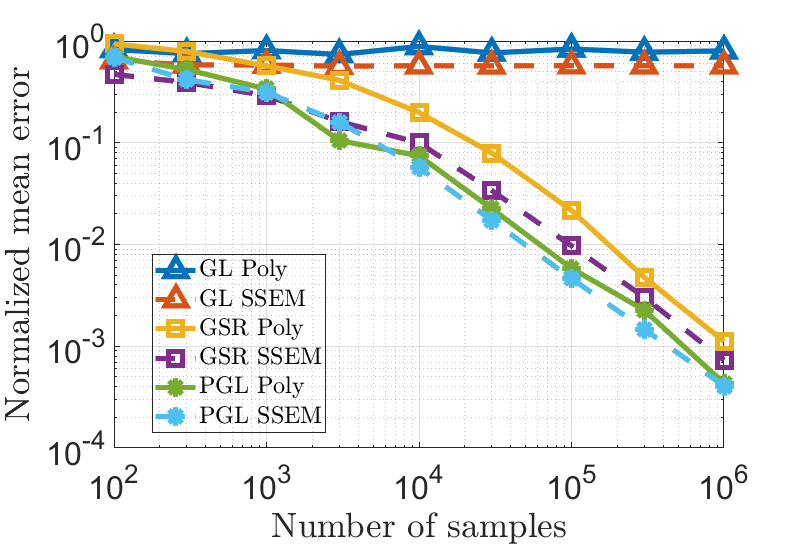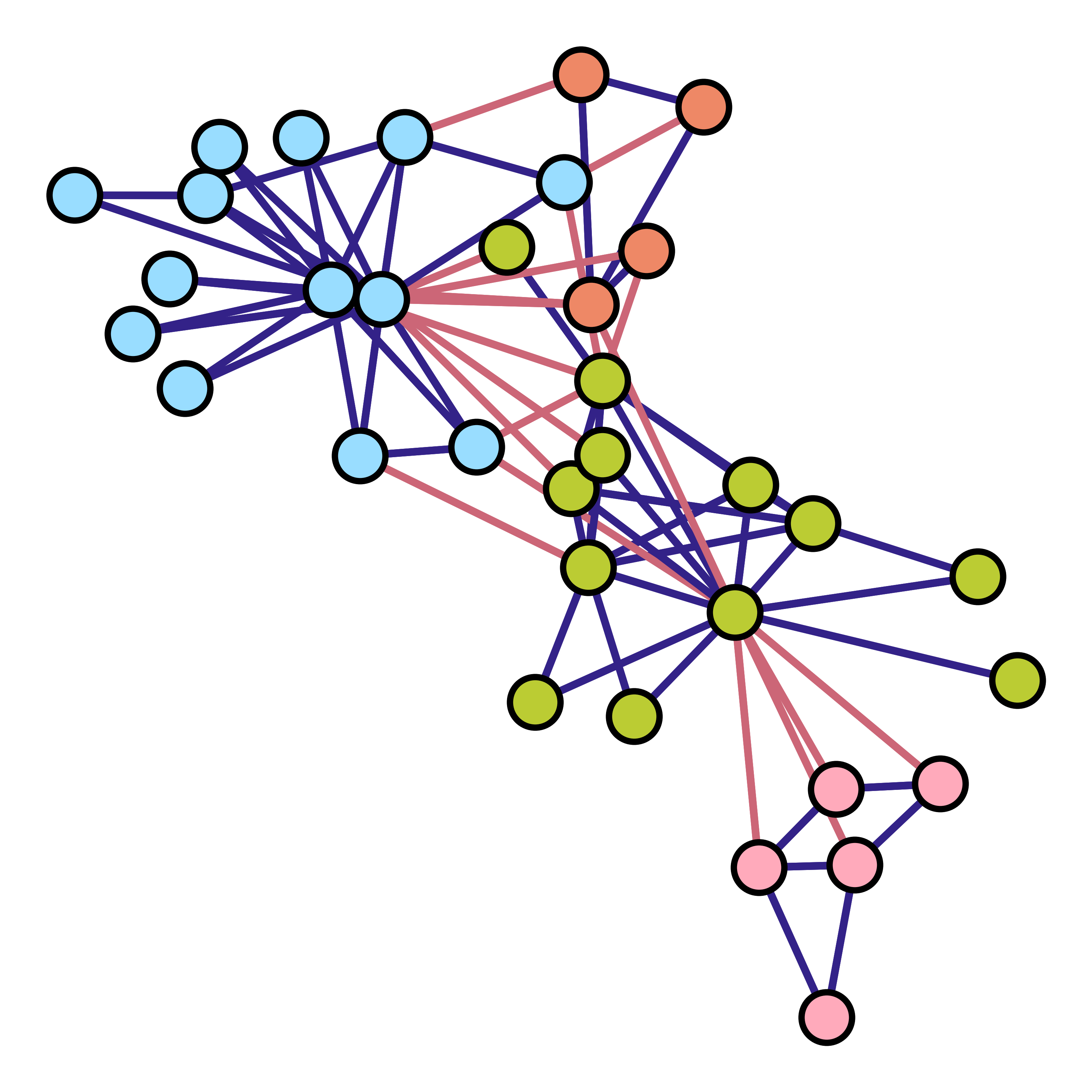Polynomial Graphical Lasso: Learning Edges from Gaussian Graph-Stationary Signals

0

Sign in to get full access
Overview
- Network topology inference from Gaussian graph-stationary signals
- Learning graph edges using a novel "polynomial graphical lasso" approach
- Leveraging the stationarity property of Gaussian signals on graphs
Plain English Explanation
The paper investigates a method for learning the structure of a network from data that exhibits a particular statistical property called "graph stationarity." Imagine a network of interconnected nodes, where each node generates a signal or measurement over time. If these signals are Gaussian-distributed and the network has a special structure where the statistics of the signals don't change as you move around the graph (known as "graph stationarity"), then the authors show how to leverage this property to infer the connections between the nodes - essentially "learning the edges" of the underlying network.
The key innovation is a new algorithm called the "polynomial graphical lasso," which can efficiently estimate the graph structure from this type of time-varying graph signal data. This could be useful in a variety of applications where you want to understand the hidden connections in a complex system, such as inferring regulatory networks in biology or analyzing social networks.
Technical Explanation
The paper focuses on learning the topology or structure of an underlying graph from Gaussian graph-stationary signals. Graph-stationary signals are a class of signals defined on the nodes of a graph that exhibit statistical properties invariant to the graph structure.
The authors propose a novel algorithm called the "polynomial graphical lasso" to estimate the precision (inverse covariance) matrix of the Gaussian signals, which encodes the graph structure. The key idea is to model the precision matrix as a polynomial function of the graph Laplacian, which allows for efficient optimization and recovery of the underlying graph edges.
Experiments on synthetic and real-world datasets demonstrate the effectiveness of the polynomial graphical lasso in learning accurate graph structures from Gaussian graph-stationary signals, outperforming existing approaches. The method is shown to be robust to noise and can handle high-dimensional settings.
Critical Analysis
The paper makes a strong theoretical and empirical case for the polynomial graphical lasso approach, but there are a few potential limitations worth noting. First, the assumption of Gaussian graph-stationary signals may not hold in all real-world scenarios, limiting the general applicability of the method. Extensions to other signal distributions could broaden the scope.
Additionally, the authors do not explore the sensitivity of their approach to violations of the stationarity assumption or the impact of graph dynamics over time. Incorporating adaptive mechanisms to handle non-stationary or time-varying graphs could be a valuable direction for future research.
Finally, while the experiments demonstrate the advantages of the polynomial graphical lasso, additional comparisons to other graph learning techniques beyond the baseline methods would help contextualize the performance gains and provide a more comprehensive evaluation.
Conclusion
The "polynomial graphical lasso" approach presented in this paper offers a promising new tool for inferring the structure of networks from Gaussian graph-stationary signals. By leveraging the special properties of this signal class, the authors have developed an efficient algorithm that can accurately recover the underlying graph topology.
This work has the potential to impact a variety of domains where understanding hidden relationships in complex systems is crucial, such as biology, social sciences, and communication networks. Further research to address the method's limitations and expand its applicability could lead to valuable advancements in the field of network topology inference and graph signal processing.
This summary was produced with help from an AI and may contain inaccuracies - check out the links to read the original source documents!
Related Papers


0
Polynomial Graphical Lasso: Learning Edges from Gaussian Graph-Stationary Signals
Andrei Buciulea, Jiaxi Ying, Antonio G. Marques, Daniel P. Palomar
This paper introduces Polynomial Graphical Lasso (PGL), a new approach to learning graph structures from nodal signals. Our key contribution lies in modeling the signals as Gaussian and stationary on the graph, enabling the development of a graph-learning formulation that combines the strengths of graphical lasso with a more encompassing model. Specifically, we assume that the precision matrix can take any polynomial form of the sought graph, allowing for increased flexibility in modeling nodal relationships. Given the resulting complexity and nonconvexity of the resulting optimization problem, we (i) propose a low-complexity algorithm that alternates between estimating the graph and precision matrices, and (ii) characterize its convergence. We evaluate the performance of PGL through comprehensive numerical simulations using both synthetic and real data, demonstrating its superiority over several alternatives. Overall, this approach presents a significant advancement in graph learning and holds promise for various applications in graph-aware signal analysis and beyond.
Read more4/4/2024


0
Graph Laplacian Learning with Exponential Family Noise
Changhao Shi, Gal Mishne
Graph signal processing (GSP) is a prominent framework for analyzing signals on non-Euclidean domains. The graph Fourier transform (GFT) uses the combinatorial graph Laplacian matrix to reveal the spectral decomposition of signals in the graph frequency domain. However, a common challenge in applying GSP methods is that in many scenarios the underlying graph of a system is unknown. A solution in such cases is to construct the unobserved graph from available data, which is commonly referred to as graph or network inference. Although different graph inference methods exist, these are restricted to learning from either smooth graph signals or simple additive Gaussian noise. Other types of noisy data, such as discrete counts or binary digits, are rather common in real-world applications, yet are underexplored in graph inference. In this paper, we propose a versatile graph inference framework for learning from graph signals corrupted by exponential family noise. Our framework generalizes previous methods from continuous smooth graph signals to various data types. We propose an alternating algorithm that jointly estimates the graph Laplacian and the unobserved smooth representation from the noisy signals. We also extend our approach to a variational form to account for the inherent stochasticity of the latent smooth representation. Finally, since real-world graph signals are frequently non-independent and temporally correlated, we further adapt our original setting to a time-vertex formulation. We demonstrate on synthetic and real-world data that our new algorithms outperform competing Laplacian estimation methods that suffer from noise model mismatch.
Read more6/13/2024


0
Fair GLASSO: Estimating Fair Graphical Models with Unbiased Statistical Behavior
Madeline Navarro, Samuel Rey, Andrei Buciulea, Antonio G. Marques, Santiago Segarra
We propose estimating Gaussian graphical models (GGMs) that are fair with respect to sensitive nodal attributes. Many real-world models exhibit unfair discriminatory behavior due to biases in data. Such discrimination is known to be exacerbated when data is equipped with pairwise relationships encoded in a graph. Additionally, the effect of biased data on graphical models is largely underexplored. We thus introduce fairness for graphical models in the form of two bias metrics to promote balance in statistical similarities across nodal groups with different sensitive attributes. Leveraging these metrics, we present Fair GLASSO, a regularized graphical lasso approach to obtain sparse Gaussian precision matrices with unbiased statistical dependencies across groups. We also propose an efficient proximal gradient algorithm to obtain the estimates. Theoretically, we express the tradeoff between fair and accurate estimated precision matrices. Critically, this includes demonstrating when accuracy can be preserved in the presence of a fairness regularizer. On top of this, we study the complexity of Fair GLASSO and demonstrate that our algorithm enjoys a fast convergence rate. Our empirical validation includes synthetic and real-world simulations that illustrate the value and effectiveness of our proposed optimization problem and iterative algorithm.
Read more6/17/2024


0
Sparse Graphical Linear Dynamical Systems
Emilie Chouzenoux, Victor Elvira
Time-series datasets are central in machine learning with applications in numerous fields of science and engineering, such as biomedicine, Earth observation, and network analysis. Extensive research exists on state-space models (SSMs), which are powerful mathematical tools that allow for probabilistic and interpretable learning on time series. Learning the model parameters in SSMs is arguably one of the most complicated tasks, and the inclusion of prior knowledge is known to both ease the interpretation but also to complicate the inferential tasks. Very recent works have attempted to incorporate a graphical perspective on some of those model parameters, but they present notable limitations that this work addresses. More generally, existing graphical modeling tools are designed to incorporate either static information, focusing on statistical dependencies among independent random variables (e.g., graphical Lasso approach), or dynamic information, emphasizing causal relationships among time series samples (e.g., graphical Granger approaches). However, there are no joint approaches combining static and dynamic graphical modeling within the context of SSMs. This work proposes a novel approach to fill this gap by introducing a joint graphical modeling framework that bridges the graphical Lasso model and a causal-based graphical approach for the linear-Gaussian SSM. We present DGLASSO (Dynamic Graphical Lasso), a new inference method within this framework that implements an efficient block alternating majorization-minimization algorithm. The algorithm's convergence is established by departing from modern tools from nonlinear analysis. Experimental validation on various synthetic data showcases the effectiveness of the proposed model and inference algorithm.
Read more6/17/2024